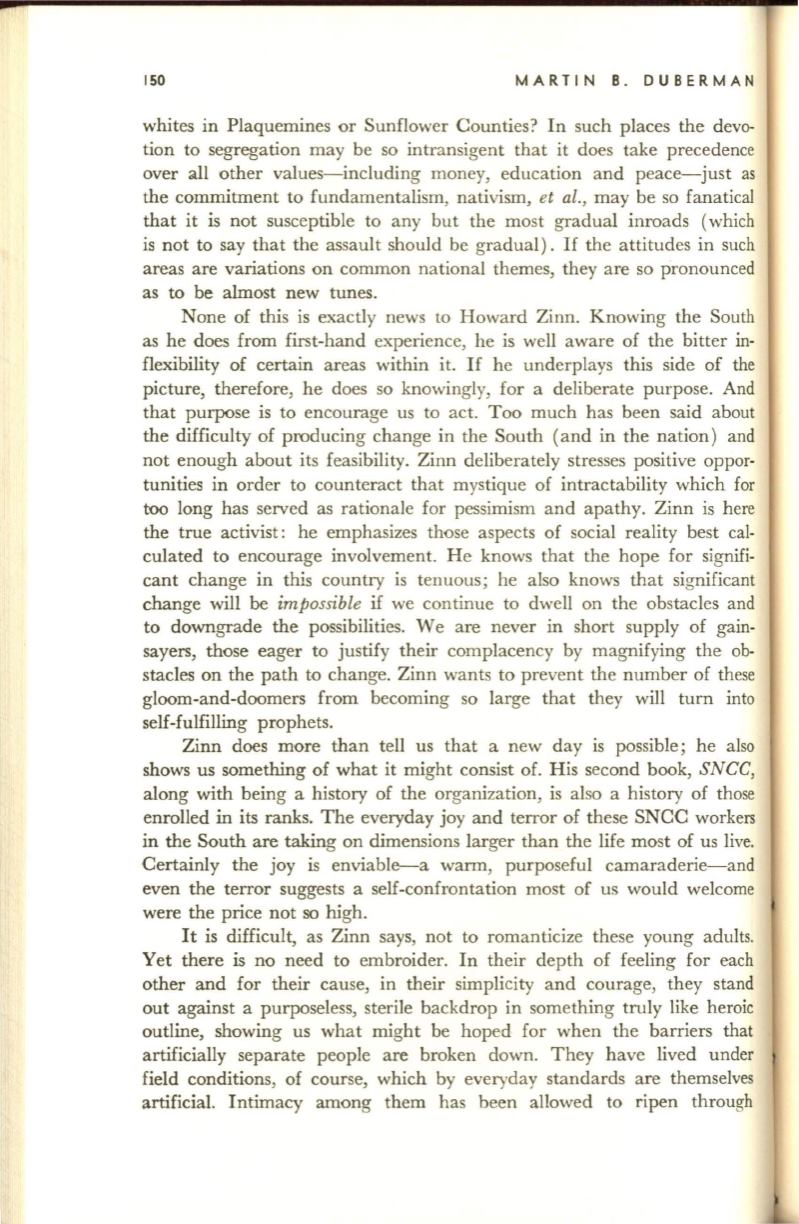
150
MARTIN B. DUBERMAN
whites in Plaquemines or Sunflower Counties? In such places the devo–
tion to segregation may be so intransigent that it does take precedence
over all other values-including money, education and peace-just as
the commitment to fundamentalism, nativism,
et al.,
may be so fanatical
that it is not susceptible to any but the most gradual inroads (which
is not to say that the assault should be gradual).
If
the attitudes in such
areas are variations on common national themes, they are so pronounced
as to be almost new tunes.
None of this is exactly news to Howard Zinno Knowing the South
as he does from first-hand experience, he is well aware of the bitter in–
flexibility of certain areas within it.
If
he underplays this side of the
picture, therefore, he does so knowingly, for a deliberate purpose. And
that purpose is to encourage us to act. Too much has been said about
the difficulty of producing change in the South (and in the nation) and
not enough about its feasibility. Zinn deliberately stresses positive oppor–
tunities in order to counteract that mystique of intractability which for
too
long has served as rationale for pessimism and apathy. Zinn is here
the true activist: he emphasizes those aspects of social reality best cal–
culated to encourage involvement. He knows that the hope for signifi–
cant change in this country is tenuous; he also knows that significant
change will be
impossible
if
we continue to dwell on the obstacles and
to downgrade the possibilities. We are never in short supply of gain–
sayers, those eager to justify their complacency by magnifying the ob–
stacles on the path to change. Zinn wants to prevent the number of these
gloom-and-doomers from becoming so large that they will turn into
self-fulfilling prophets.
Zinn does more than tell us that a new day is possible; he also
shows us something of what it might consist of. His second book,
SNCC,
along with being a history of the organization, is also a history of those
enrolled in its ranks. The everyday joy and terror of these SNCC workers
in the South are taking on dimensions larger than the life most of us live.
Certainly the joy is enviable--a warm, purposeful camaraderie-and
even the terror suggests a self-confrontation most of us would welcome
were the price not
SO
high.
It is difficult, as Zinn says, not to romanticize these young adults.
Yet there is no need to embroider. In their depth of feeling for each
other and for their cause, in their simplicity and courage, they stand
out against a purposeless, sterile backdrop in something truly like heroic
outline, showing us what might be hoped for when the barriers that
artificially separate people are broken down. They have lived under
field conditions, of course, which by everyday standards are themselves
artificial. Intimacy among them has been allowed to ripen through


